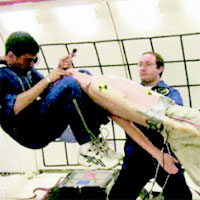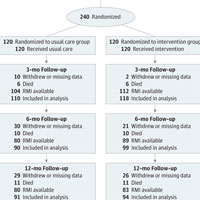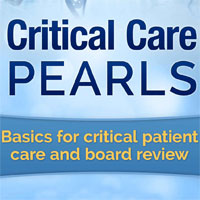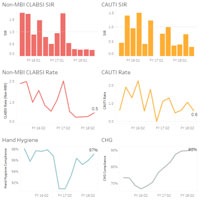
Letting the Patient Decide: A Case Report of Self-Administered Sedation During Mechanical Ventilation
It is common for critical care nurses to administer sedative medications to patients receiving mechanical ventilation. Although patient-controlled analgesia is frequently used in practice to promote effective self-management... read more

Monitoring the Relationship Between Changes in Cerebral Oxygenation and Electroencephalography Patterns During Cardiopulmonary Resuscitation
Real-time monitoring of cerebral oxygenation and function during cardiac arrest resuscitation is feasible. Although voltage suppression is the commonest electroencephalography pattern, other distinct patterns exist that may... read more

Tele-ICU Leads to Overall Reduction in ICU Mortality
A new systematic review and meta-analysis has found that implementation of tele-ICU services was associated with an overall reduction in ICU mortality. Furthermore, in subgroup analysis, the pooled odds ratio for ICU mortality... read more

Expanding the Differential for Hypotension in the Pediatric Patient
As many ED practitioners are aware, food allergies are common in the first 2 years of life, with a prevalence cited between 1-10% of the population. Most food allergies are IgE-mediated hypersensitivity reactions. Food protein-induced... read more

Determination of Brain Death Under Extracorporeal Life Support
The worldwide use of extracorporeal lung/life support is increasing in severe lung failure (veno-venous extracorporeal membrane oxygenation, vvECMO) or in cardiac arrest/severe circulatory failure (veno-arterial ECMO, vaECMO).... read more

This Minimally Invasive Technique Could Reduce the Need for Open-Heart Surgery
Currently, the majority of individuals who undergo transcather aortic valve replacement (TAVR), a minimally invasive alternative to open-heart surgery—are elderly or subject to compounding complications such as kidney disease.... read more

Airway Management in Microgravity
In the near future, space programs will shift their focus toward long‐duration interplanetary missions, in particular to the Moon and Mars. These exploration missions will be associated with an increased risk of acute medical... read more

A Surprising Way to Decrease Stress in Nursing
What if I told you that it wasn't the patient load that was actually stressing nurses out in the workplace? Would you believe me? Most nurses go into the profession of nursing to care for sick patients. So even those days... read more

Increased Hospital-Based Physical Rehabilitation and Information Provision After ICU Discharge
Post-ICU hospital-based rehabilitation, including increased physical and nutritional therapy plus information provision, did not improve physical recovery or HRQOL, but improved patient satisfaction with many aspects of recovery.... read more

Extravascular Lung Water as a Target for Intensive Care
Extravascular lung water (EVLW) remains a useful guide for monitoring pulmonary edema (PO) and vascular permeability in sepsis, acute respiratory distress syndrome (ARDS), and heart failure. In addition, EVLW has a prognostic... read more

Critical Care Pearls: Basics for Critical Patient Care and Board Review
Critical Care Pearls for medical professionals involved in taking care of critically ill patients. An excellent resource for board review written by Dr. Iqbal Ratnani and Dr. Salim Surani. Dr. Iqbal Ratnani, MD, FCCP, FCCM... read more

A Non-Antibiotic Approach for Treating or Preventing Sepsis
Researchers at the Royal College of Surgeons in Ireland (RCSI) have tested a compound called cilengitide in a preclinical trial. The drug goes by the brand name InnovoSep. Researchers discover the drug has the potential to... read more

Hospital-acquired Infections – Adding Process Metrics
So far, we've only been looking at metrics that are really big and important. This is certainly a good place to start. To move beyond this, I'd like to introduce the concept of Outcome vs Process Metrics. Outcome Metrics... read more

Early or Delayed Cardioversion in Recent-Onset Atrial Fibrillation
In patients presenting to the emergency department with recent-onset, symptomatic atrial fibrillation, a wait-and-see approach was noninferior to early cardioversion in achieving a return to sinus rhythm at 4 weeks. The presence... read more








